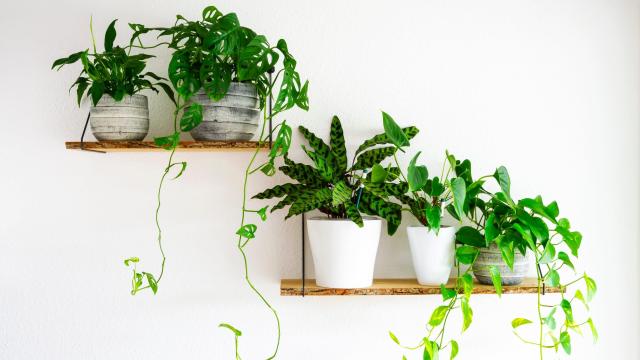When we think about our personal impact on the environment, our first thoughts might be switching to reusable shopping bags or conserving water and electricity. But what about our houseplants?
Countless articles over the past several years have listed the benefits of houseplants — particularly claims about their ability to “clean the air.” But aside from there being little-to-no scientific evidence to backup that “fact,” a recent article in The Telegraph details how some houseplants may actually be harming the environment. Here’s what to know.
Peat is the problem
The short version is that most houseplants are grown in peat, which Matthew Appleby describes as “a nutritious soil-like substance formed from decayed organic matter over time.” Sounds great, but that peat has to come from somewhere. Per Appleby:
The mining of peat is now widely condemned as unsustainable, environment-wrecking and carbon-emitting. Like coal or oil, it is effectively a finite resource. It does regenerate, but only forms at a rate of 1 mm annually.
And while plant parents are likely well aware of the environmental impact of fossil fuels, Appleby says that few realise that the peat that comes with their plants is also a finite resource.
How to choose environmentally friendly houseplants
While public awareness of the problems with peat aren’t nearly as widely known as say, the environmental impact of farming almonds for almond milk, there is some evidence that it appears to be growing — at least in the UK.
Specifically, Harriet Thompson, a horticulturalist Appleby interviewed for the article who propagates and sells peat-free houseplants, said that the demand for her houseplants has been 200% higher in the first three months of 2021 than in all of 2020.
If this perspective on peat mining has made you want to be a more ethical houseplant buyer, here are some ways to ensure that your foliage is as environmentally friendly as possible:
- Shop for peat-free plants. This will take more time and effort than strolling into your local Lowe’s and perusing the garden centre, so get ready to Google.
- Repot your current houseplants in peat-free compost. “Simply get rid of the old compost and repot them in a peat-free compost,” says Thompson — but maybe wait until your plants actually need to be repotted so you’re not unintentionally creating even more waste. Either way, make sure to be gentle with the roots when repotting.
- Buy peat-free compost. Not buying new plants, but continuing to maintain ones you already have? Check the label the next time you buy compost and find one that’s peat-free.
- Grow your own houseplants (from cuttings or seeds) instead of buying a new one. Need some help with that? We’ve previously covered growing plants from cuttings as well as growing vegetables from kitchen scraps.
In the Telegraph article, Thompson notes that houseplants are the horticultural equivalent of fast fashion: “We’ve all done it — you see a plant for sale and think ‘that’s nice’ and you just buy it without thinking.” If nothing else, thinking about houseplants in these terms — the H&M of horticulture — can be helpful.

Leave a Reply
You must be logged in to post a comment.